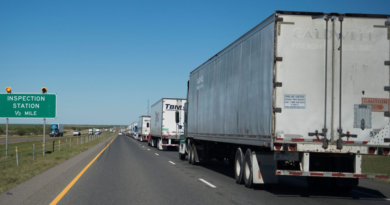Hollywood writers are having a steampunk moment, Barclays says. A.I. really will change everything—a few decades from now
What would the world look like without the integration of electricity? Steampunk fans know. For anyone who’s not versed in one of the most popular science fiction genres outside of, say, Star Wars–style space opera or eerily relevant cyberpunk (and why wouldn’t you be?), steampunk imagines a retro-chic future where an economy of the future, including flying cars or even trains, would run completely on steam, as if the Victorian age technology prevailed over electricity. It turns out that one of the major investment banks, Barclays, is prone to some steampunk-style thinking, at least when it comes to the markets’ topic du jour: artificial intelligence.
For its annual Signal in the Noise compendium, assembled by the bank’s media and telecoms team, Barclays addresses A.I.’s potential impact on art and touches on the topical case of the Hollywood writers’ strike over several disagreements but especially the use of A.I. in screenwriting. It discusses, among other things, the tentative Hollywood directors’ deal that includes the agreement that “A.I. cannot replace the duties performed by members.”
A.I. may actually be a boon to creatives, and could tilt their power balance with corporations if used wisely, Barclays said, adding that the threat to writers is not as urgent as perceived. Just look at the steam engine.
Consider the steampunk
“Technology tends to fundamentally restructure pre-existing workflows into different forms, which ultimately results in new capabilities,” Barclays wrote. In other words, the bank predicts that A.I. will transform Hollywood’s operations, but in a way that expands, not eliminates, opportunity. The catch is, it won’t happen overnight.
The full integration of new tech into the workplace can lag decades behind its advent, because it is costly to implement and most companies are looking for just a quick productivity boost. The compendium uses the example of factories adjusting to the invention of electricity. Initially, factories simply replaced steam engines with electric motors without redoing the factory layout that was structured around maximizing steam efficiency.
This lazy innovation plug-in restricted the amount of efficiency that electricity could add, and it was only a generation later, when businesses completely redesigned around electric power, that they reaped its full benefits. Right now, in the infancy of A.I., companies are inserting the technology into existing workflows but not restructuring their whole business models around it. The writers who are on strike and, unlike the directors, don’t have an agreement on A.I., are essentially advocating for a steampunk-style future where the current creative industry works in the same fashion as it has been for the next several decades. That’s just not how technology works in the modern economy, Barclays says. In other words, there won’t be a steampunk alternative of 1990s-style writers’ rooms producing works like Seinfeld and Friends in perpetuity. It will look different.
‘Fundamental misinterpretation of the role of technology’
The directors union reached an “agreement confirming that A.I. is not a person,” and therefore cannot assume writers’ duties. As noted by the FT‘s Alphaville blog, Barclays claims that the framing of the agreement “represents a fundamental misinterpretation of the role of technology in content creation.”
The relationship between a writer and A.I. is akin to that of a painter and a camera, when the tool was first invented. The camera, being a device without independent vision and artistic intent, was never in competition with a painter. What’s more, photography did not make painting obsolete. It simply birthed an entirely new art form that is arguably more accessible and democratic. It expanded the art market without expelling existing players. It’s too early to say whether A.I. will follow this trend, but Barclays is optimistic that the new tech will enhance—and eventually redefine—the creative process to the benefit of creatives.
A common fear about A.I. in the workplace is that it will automate tasks and eliminate the need for human workers. In the context of art, Barclays argues that production companies already receive a deluge of serviceable stories from outside writers every day, which doesn’t stop their commissioning of more talented writers like the ones on strike.
Another fear is that with A.I., anyone will be able to produce work that previously required an investment in education and tools to create. A.I. will make it possible for more people to produce more art—but a proliferation of content doesn’t have to spell doom for established creatives. Signal in the Noise suggests that the increased volume will instead result in the creation of more distribution channels to share the explosion of content, such as social media and online platforms. The artists put out of work today will be replaced by many more in years to come, enabled by exploitation of this new tool.
“A.I. should in theory be used by the best content creators to become even better and tougher to replace,” Barclays wrote. “The best talent will become even more valuable as technology will enable further enhancement of their work the same way Walt Disney or James Cameron incorporate technology to widen the canvas for storytelling.”
The creative sector is at a crossroads, with the option to eschew A.I. and proceed into a steampunk-esque future largely trapped in the past. Signal in the Noise urges artists to take note of history and embrace the next industrial revolution.



